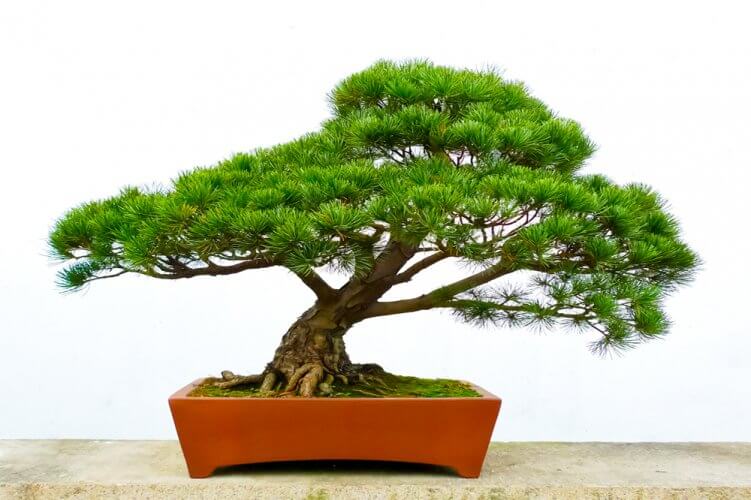Are you thinking of growing a pine bonsai tree, but aren’t sure how to go about getting started? There are a few things to consider before leaping into this sort of gardening project. First of all, bonsai is actually a form of art which allows you to creatively impose your design upon a living object. That being said, bonsai can still be fun whether you have any artistic ideas or not. –But if your heart isn’t into the detailed and time-consuming pruning and wiring required to give the tree a unique and inspiring appearance, you might not reap the joy you envision a bonsai to bring.

If you find that you are up to the challenge and would like to give it a shot either way, then let’s get started! The pine bonsai family is notorious for being a little on the difficult side when it comes to growing. Why is that? Well, pines have a tendency to throw all of their nutrients into growing a full and lovely top portion. While this produces a nice, bushy appearance to work with at the top of the tree, the trunk is often left weaker and underdeveloped in comparison. Because of this weakness, “training” the pine bonsai to grow the way you want it to can be especially difficult. The trunk of a pine tree is also less likely to broaden to the extent that most other bonsai species sport so nicely.
Don’t let that put you off the idea of trying your hand at growing a pine bonsai. If you have the patience for training and know how to provide the best growing environment for the tree, you can succeed! Let’s start off by addressing the ideal temperatures for the pine tree family. Most species of pine can handle temperatures between 65 and 85 degrees F, but what they don’t handle well is wind. Excessive wind tends to dry out the trunk and branches of this species, which is especially bad considering that the trunk is already quite fragile in nature. During the windy months, you should consider providing a protective structure for your bonsai if it will be kept outdoors, or simply bring it inside.
Pine bonsai trees love the sunlight, but direct harsh sunlight–such as during a hot summer–can cause the pine needles to lighten and can also dry out the trunk of the tree. Even if you are keeping your tree indoors, direct sunlight even from a window can harm your tree. If you don’t like the idea of using a thin curtain to filter the sunlight, then you can erect a cloth structure above the pine bonsai to offer a man-made form of filtered sunlight similar to what you would see in a forest setting.
It is recommended that you apply an organic liquid fertilizer to your tree during the growth season. A 0-10-10 will work nicely with most pine species. When you notice new needles beginning to develop on your tree, it’s time to fertilize. As soon as the new growth appears to mature (it will be dark green in color and hard to the touch), then you must stop using the fertilizer. If the pines on your tree begin to grow abnormally long, cease all fertilizing and move your tree to a more shady area. Pines tend to stretch out when they receive too much sunlight, and of course with bonsai the idea is to keep everything “mini”, including the pines!
The pine bonsai is a bit particular about the frequency of which it is watered. Pine trees always seem to perform best when kept just a teensy bit on the dry side. This doesn’t mean that you should deprive your tree of water, however you should allow it a decent period of dryness between watering. The best way to determine when your tree is ready to be watered is by checking the pine needles. If the needles appear moist, then it is not time to water. However, when the needles start to appear lighter or dry and the soil is dry to the touch, then it’s time to give the tree a good watering. Make sure that you water deeply into the soil, but take care not to flood the container. The best way to avoid over watering your tree is to keep it in a container that is fitted with drainage holes. You can place a tray underneath the box to catch the excess water which you can dump out at your convenience. Pine trees, especially the Japanese Black Pine, are particularly susceptible to root-rot, so it’s imperative that you follow these watering guidelines.
A pine bonsai really isn’t the best beginner bonsai tree. It takes a very delicate and perfected touch to train a pine tree with wires and pruning. If you haven’t got a clue about how to do this, you might want to consider taking a bonsai class or even look around online for demonstrations of how to properly train a bonsai tree. Beginners may find a boxwood species of bonsai tree to be much more suitable as a first-time bonsai project. After getting a feel for how to train a tree to grow abnormally, the chances of successfully training a bonsai pine tree will be drastically increased.
